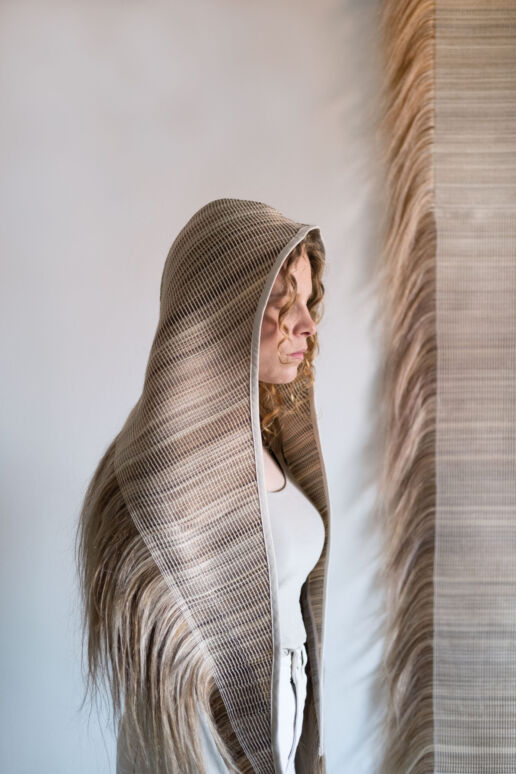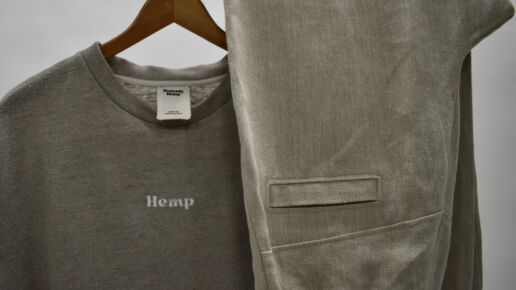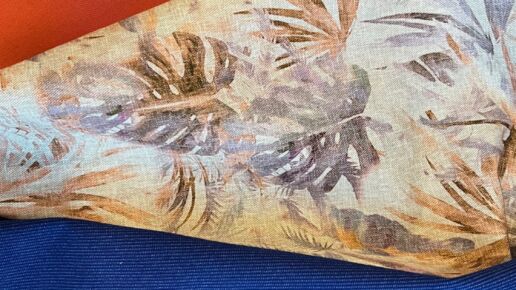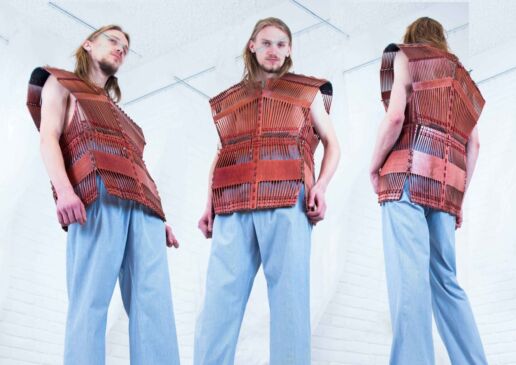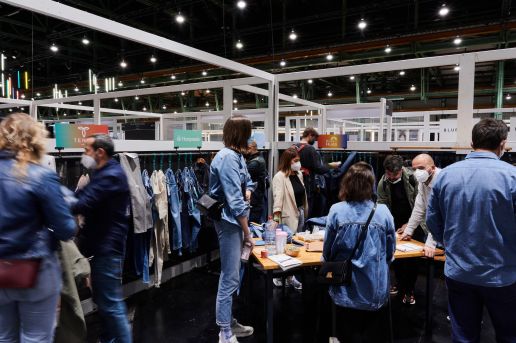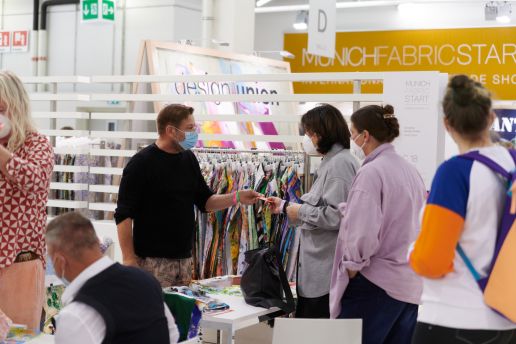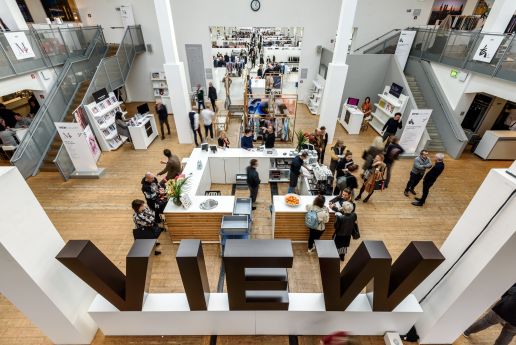Circular Economy
Hairy affair - Sustainable Innovation
Hair creates identity – we dye it, style it, create new looks and expressions, and associate ourselves with cultural or social groups. It loses meaning and becomes rubbish to be discarded. In her hair project, Savine School gives hair a second life.
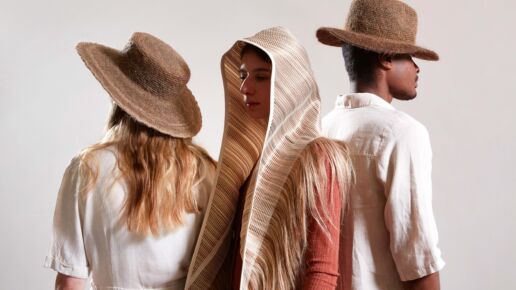
“Haar Haar focuses on the short switch from appreciating hair to feeling disgusted by it, even when it is the same material. It seeks to give a second life
to the material we treasured when it was on our head.“
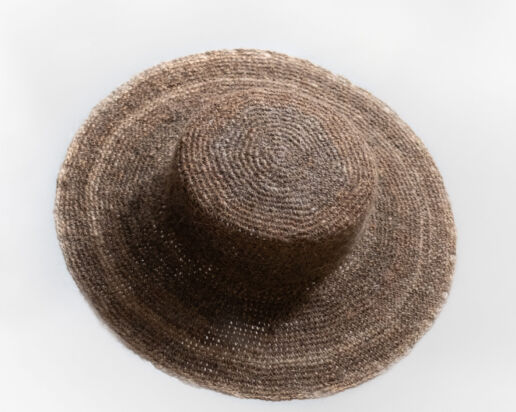
Every month, the textile designer and material researcher collects kilos of hair from various hair salons and extension studios and sorts them by colour and length. In the next step, she uses a machine to spin the hair together with wool into a uniform, flexible yarn. This yarn highlights the properties of both materials: the admixed wool offers the possibility to work with other tones beyond the hair colours, while the reflection of light on the hair provides a beautiful shimmer.
The designer uses the yarn to produce stylish accessories, such as crocheted hats – which at first glance have nothing to do with what ends up on the floor during a visit to the hairdresser. In this way, Savine Schoorl makes it clear that hair is a valuable resource and gives people the opportunity to discover the value of supposed waste in its second life cycle.
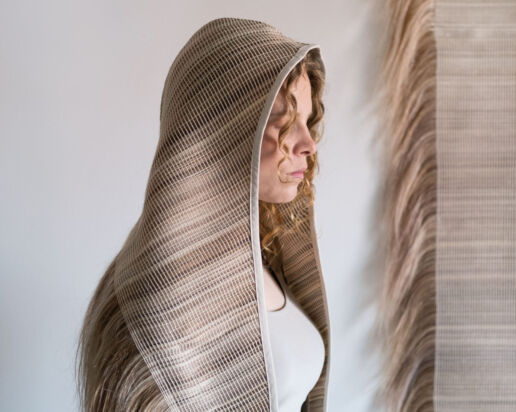
———————————————————————–
THIS MIGHT BE ALSO INTERESTING FOR YOU:
Honestly Hemp – Sustainable Innovations
11. April 2024
Her vision: to create an entire outfit made wholly from hemp fibre and end the stigma surrounding the plant.
Fabric Trends Spring.Summer 25 – Part V
9. April 2024
At the heart of this collection is Q-Cycle by Fulgar™, a revolutionary approach that incorporates end-of-life tires into the mass balance technology used during its production, minimizing waste and giving a new life to materials that would contribute to environmental challenges.
BLUEZONE Signature Spring.Summer 25 – Part II
4. April 2024
The designer has given free rein to his creativity to develop his vision of high quality, making increased use of ISKO's Ctrl+Z material science.
A Suit of Armour - Sustainable innovations
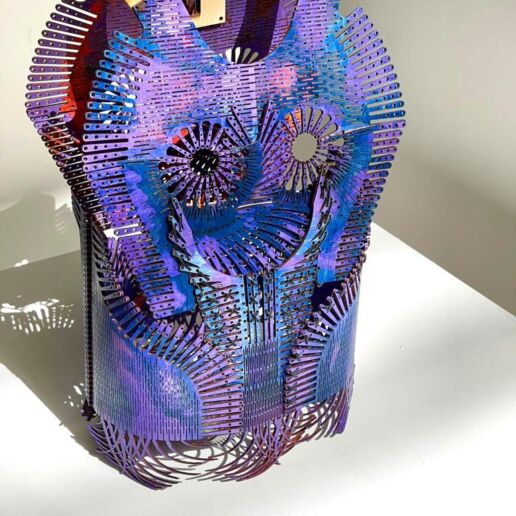
The name says it all: “Choub” means “wood” in Farsi – the material that designer Mehdi Mashayekhi draws on in his project Choub and uses innovative methods to create something new: Using digital fabrication, he has designed an abstract clothing collection for which he deconstructs the wood, giving the material new physical properties such as flexibility and stretchability.
The designer resorts to two methods: with topology optimisation, a computer-based process, he uses algorithmic models to determine the optimal shape of components in terms of load limits. The generative design method also creates new, powerful design options with the help of artificial intelligence. In this way, Mehdi Mashayekhi succeeds in solving complex requirements, distributing the weight of components and reducing manufacturing costs.
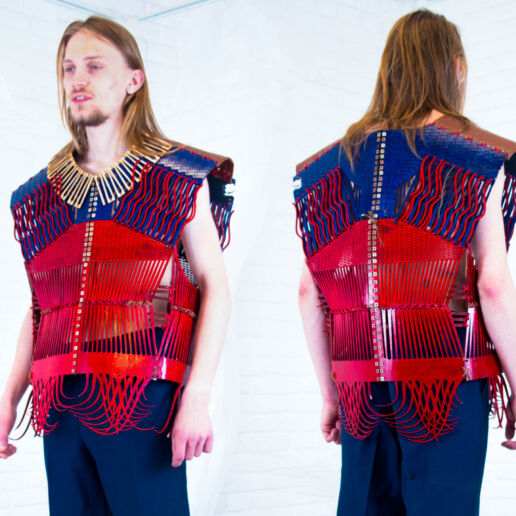
“Design is a glowing point in the cross-point between art and science, where reality meets vision.”
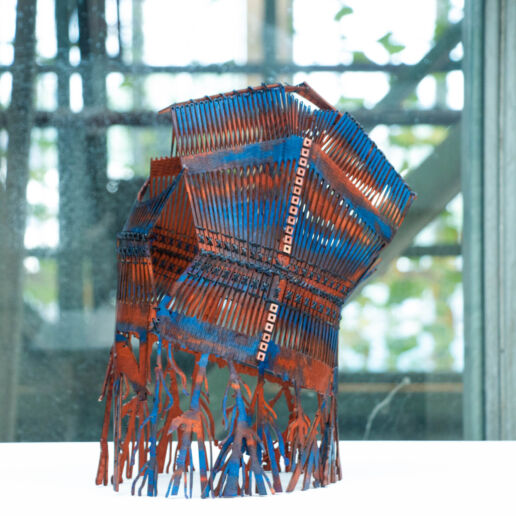
Innovative, unconventional, visionary: In the Choub project, 6mm thick plywood is used to create armour-like, portable constructions in which the wood loses its hardness and becomes flexible. Win-win: The designer optimises the use of materials in the design and at the same time provides a solution for upcycling waste. With the use of digital manufacturing, Mehdi Mashayekhi is helping to drive circularity and strengthen openness to materials and technical textiles.
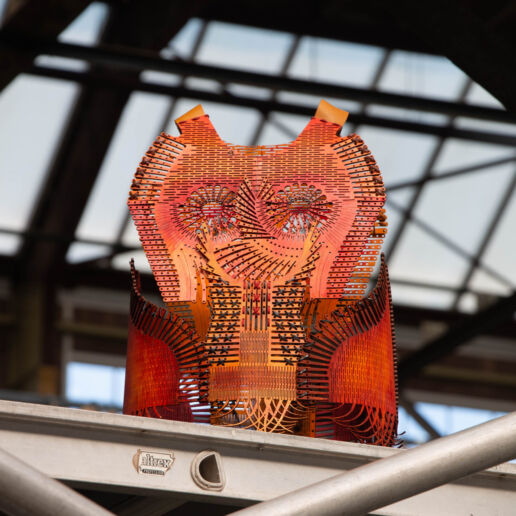
———————————————————————–
THIS MIGHT BE ALSO INTERESTING FOR YOU
Honestly Hemp – Sustainable Innovations
11. April 2024
Her vision: to create an entire outfit made wholly from hemp fibre and end the stigma surrounding the plant.
Fabric Trends Spring.Summer 25 – Part V
9. April 2024
At the heart of this collection is Q-Cycle by Fulgar™, a revolutionary approach that incorporates end-of-life tires into the mass balance technology used during its production, minimizing waste and giving a new life to materials that would contribute to environmental challenges.
BLUEZONE Signature Spring.Summer 25 – Part II
4. April 2024
The designer has given free rein to his creativity to develop his vision of high quality, making increased use of ISKO's Ctrl+Z material science.
The Material Revolution - Who is leading the charge?
In the past five years, groundbreaking science has been changing the clothing industry one experiment at a time. With a ravenous appetite for new fabrics, some great candidates have been castor bean-derived nylons, mushroom leather, and synthetic spider silks. Designed to correct some of the textile industry’s wrongs, new materials have been enticing the attention of some of the most prominent players in the fashion industry, which is an excellent thing.
Introducing Cutting Edge Atelier
As we enter a new material age, there has been an influx of fabric alternatives being researched and explored. So even though it may all seem pretty experimental right now, here are five companies making many of us believe that new materials will become the norm over traditional ones.
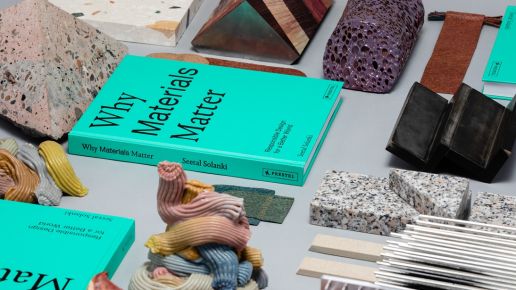
Picture credit:
Circular Systems
AlgiKnit
Is biology the future of fashion? Well, AlgiKnit seems to think so. The biomaterials company has been developing biomaterials that can play a vital role in the future of sustainable manufacturing.
By addressing the ecological damage caused by the fashion industry, AlgiKnit is making an impact by operating in a closed-loop product lifecycle that will bring sustainable bio-based textile alternatives to the footwear and apparel industries.
The biomaterials startup focuses on transforming the apparel ecosystem with rapidly renewable bio-based textiles. AlgiKnit has found a way of utilising materials with a significantly lower environmental footprint than conventional textiles. One of these materials is Kelp. Considered to be one of the fastest-growing organisms on earth – up to 10 times faster than bamboo. “Kelp is grown in aquatic farms around the world in coastal communities, often by fishermen and women, providing income during the fishing off-season,” states their site.
One of the benefits of Kelp, according to Fashion United is that it improves the environment by absorbing nutrients from agricultural and sewer run-off that can alter coastal settings. This recaptures nutrients for the next generation of biomaterials. Also, Algiknit’s biopolymer is entirely customisable.
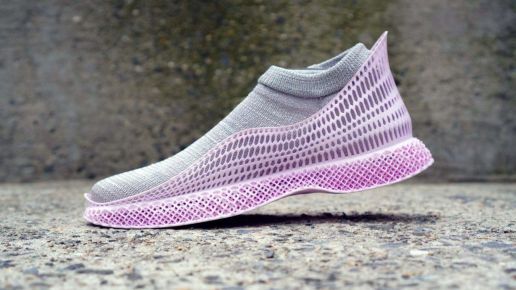
Picture credit: Algiknit

Picture credit: Algiknit
MyCoWorks
Founded by Philip Ross, Sophia Wang and Eddie Pavlu, the California startup MyCoWorks comprises a team of creative engineers, designers, and scientists. Their distinctive disciplines gave birth to a rapidly renewable natural resource called mycelium.
According to Insider.com, Mycelia are thread-like masses of fungi that grow underground. They run through almost every square inch of earth, delivering nutrients and allowing plants to “talk” to each other. MyCoWorks has innovatively used fungi to create a textile that performs like leather. On the mushroom-like material, Wang admitted to it being “a new thing in the world.”
So what does mycelium bring to the table? Well, MyCoWorks have presented mycelium as the solution to replace the resource-intensive product, leather. Relying on nature’s best tools, they have created a new kind of leather that can multiply from mycelium using a carbon-negative process. In addition, their custom-engineered material is sustainable, versatile, and animal-free. On MyCoWorks new leather, Dr Amanda Parkes, Chief Technology and Research at Manufacture NY, shared, “I believe we can solve all the world’s problems with mycelium biology”.
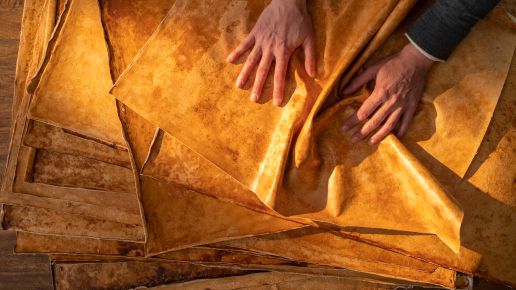
Picture credit: MyCoWorks
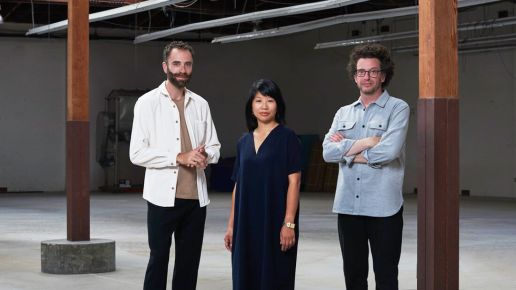
Picture credit: MyCoWorks
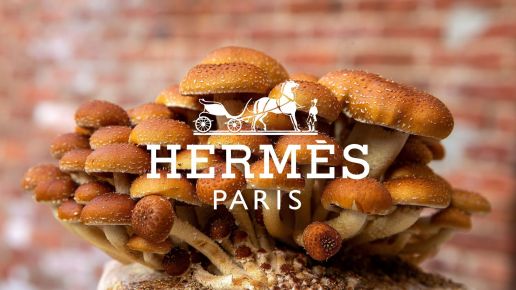
Picture credit: MyCoWorks
Desserto
Cactus vegan leather is nothing new. The material first came to our attention back in 2019. We wrote about how the two entrepreneurs, Adrián López Velarde and Marte Cázarez, developed and showcased their vegan leather material at the International Leather Fair Lineapelle 2019.
Made with cactus, the alternative to animal leather was heralded as a high resistance vegan cactus leather that would appeal to the fashion, interior and car industries.
Named Desserto, the cost-competitive material has been designed and developed to meet the most rigorous standards from the Aeronautic to the Fashion industries. That being said, not everyone has sung their praises. For example, Dr Ashley Holding and Paula Lorenz outed the Desserto material as partly vegan leather with cactus; the rest they described in a write-up was “undefined chemicals”. Although the founders have shared that the chemicals they use are non-toxic, it is not a truth revealed so openly by Desserto. Instead, the Mexican startup concentrated on the fact that their material was ‘PVC Free’ and did not contain a particular type of plastic.
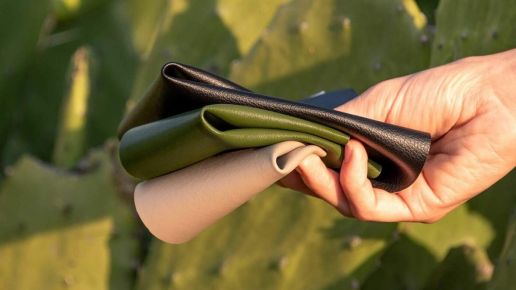
Picture credit: Desserto
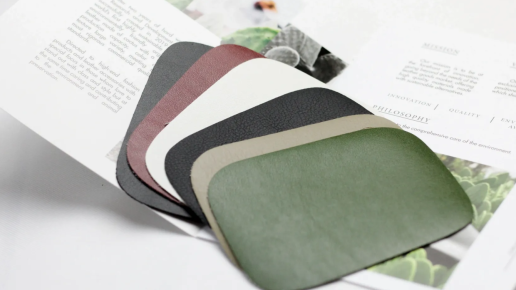
Picture credit: Desserto
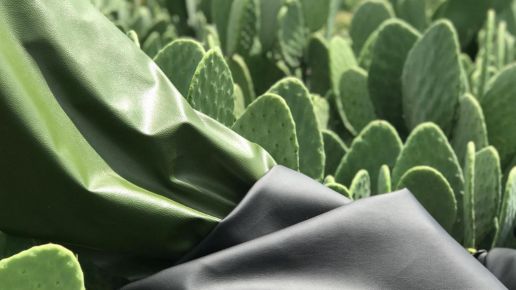
Picture credit: Desserto
Agraloop
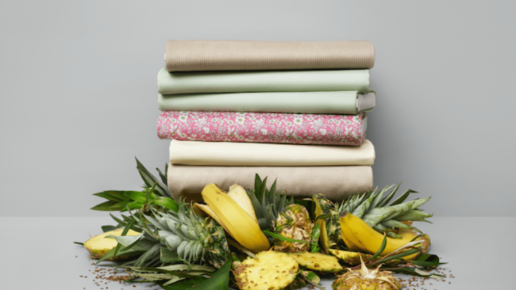
Picture credit: Agraloop
Agraloop has been busy transforming leftovers from food and medicine crops into scalable high-value natural fibre fashion products. The materials science company refines natural fibres from crops into a textile-grade fibre called Agraloop™ BioFibreTM.
“Our circular plus regenerative technologies provide systemic solutions for transforming waste into valuable fibre, yarn, and fabrics for the fashion industry,” states their website.
Mindfully sourced for circularity, Agraloop has developed a specialised wet processing technique; cellulose fibre from stems and leaves is purified into soft fibre bundles ready to spin into yarns. The Agraloop processes leftovers from various food and medicine crops, including oilseed hemp/flax, CBD hemp, banana, and pineapple.
Modern Meadow
Modern Meadow exists at the intersection of performance, scalable adoption and sustainability. The company began with an R&D initiative to develop a sustainable alternative to leather, which led to a breakthrough discovery of proteins as functional ingredients.
Harnessing the power of design, biology, and engineering, in 2017, Modern Meadow launched their prototype materials brand, ZOA. With the ability to impact a range of products across multiple industries, Modern Meadow state on their website: “Our experiments and exploration within ZOA led to the creation of Bio-Alloy™ and its application in a wide range of high-performing, low-waste bio fabricated materials, and our unique capabilities to create functional, animal-free proteins.”
Scaling by partnering with forward-thinking developers, manufacturers, and brands, Modern Meadow continues to educate industries on the possibilities of a biomaterial future.
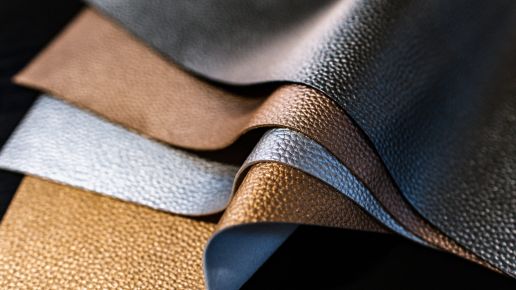
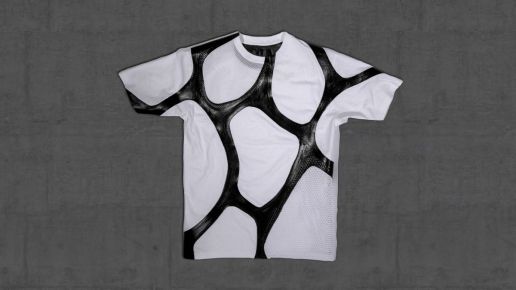
Picture credit:
Modern Meadow
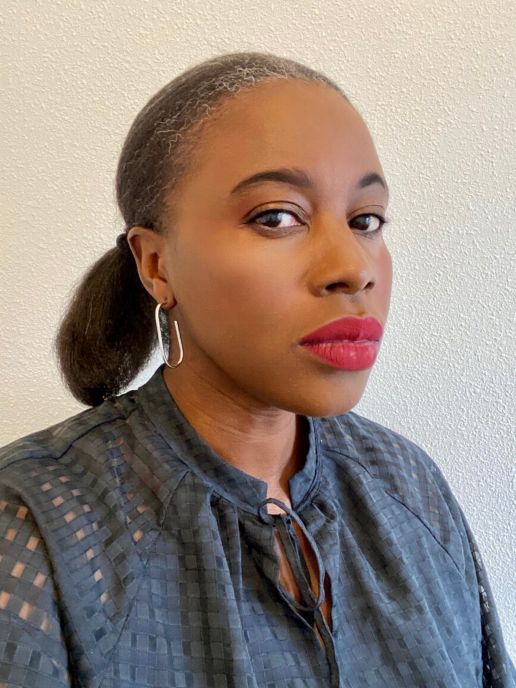
About the author
Founding editor-in-chief of FashNerd.com, Muchaneta has worked in the fashion industry for over 14 years. She is currently one of the leading influencers speaking and writing about the merger of fashion with technology and wearable technology.
Muchaneta ten Napel | editor@fashnerd.com
———————————————————————–
Discover further industry-disrupting innovations at our upcoming shows:
Recycling Textile Waste, Viable Solution or Short term plan?
With the rapid global increase in textile waste caused by the growth of the clothing and textile industry and fast fashion among consumers, textile recycling has become paramount.
The problem is that recycling textile is not an easy feat.
Many factors need to be considered. The most challenging obstacle to textile recycling is that the fabrics are often made from blended materials, and it is not easy to recycle mixed materials. This is mainly because each textile needs to be isolated before being effectively recycled. So as the fashion industry feels the pressure to move toward closed-loop production, what is the solution?
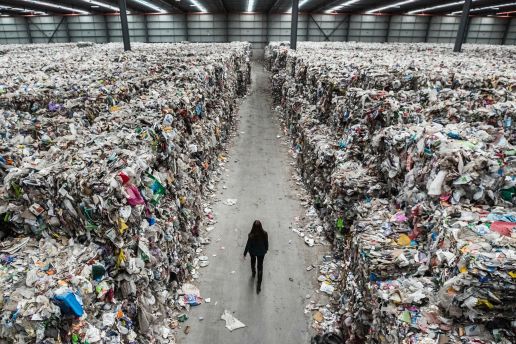
Picture credit: Rolling Stone
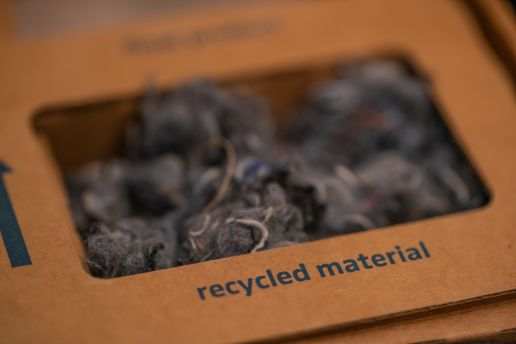
Picture credit: Pollima
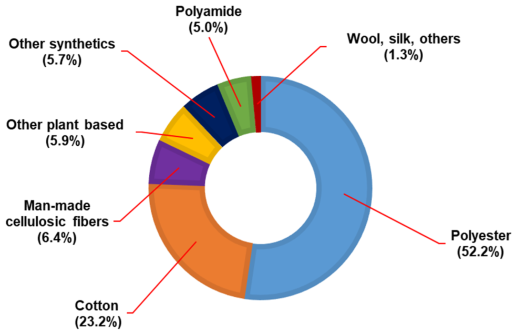
Picture credit: MDPI
Game-Changing Solutions Explained
Well, with various groundbreaking methods in the works, like the Hong Kong Research Institute of Textiles and Apparel (HKRITA), who came up with a solution that makes it possible to recycle blended material into new fabrics and yarns without any quality loss. They can do this thanks to a hydrothermal (chemical) process.
Working together with H&M Foundation, they successfully developed a process that can fully separate and recycle cotton and polyester blends. The recovered polyester material can be reused directly, creating new benefits of recycling without any quality loss. The hydrothermal process uses only heat, water and less than 5% biodegradable green chemical to self-separate cotton and polyester blends. This fibre-to-fibre recycling method is cost-effective, and there’s no secondary pollution to the environment, ensuring the life of the recycled material is prolonged sustainably. The technology will be licensed widely to provide broad market access and maximum impact.
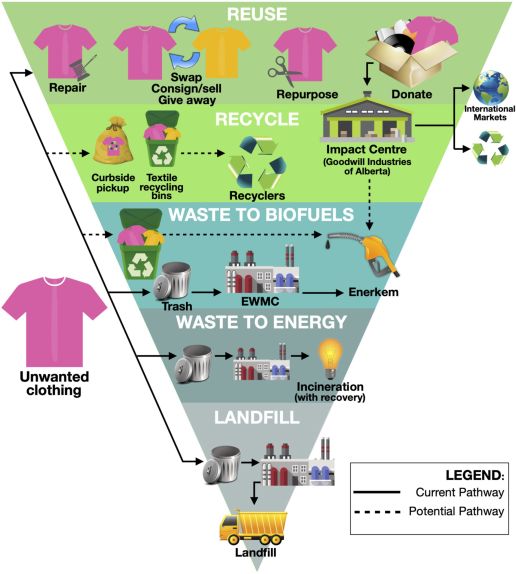
Picture credit: Sion Fraser University
Erik Bang, former Innovation Lead at H&M Foundation, shared:
“For too long, the fashion industry has not been able to recycle its products properly since there’s no commercially viable separation, sorting, and recycling technology available for the most popular materials such as cotton and polyester blends”. He continues, “This very encouraging finding has the potential to change that. We are very excited to develop this technology and scale it beyond the laboratory, which will benefit the global environment, people and communities.”
Then there is the Swedish company Södra. They have come up with a unique recycling solution that could influence how the fashion industry recycles its textiles.
Designed to enable large-scale textile recycling, the Södra, a significant forestry cooperative based in Växjö, Sweden, has come up with a unique solution that solves this fundamental obstacle to the textile industry. The pioneering solution makes it possible to recycle textiles on a large scale.
Using its resources and expertise for an innovative textile recycling solution, Södra has found a way to recycle fibres from blended fabrics on a large scale. They did this by enabling circular flows in the fashion and textile industry.
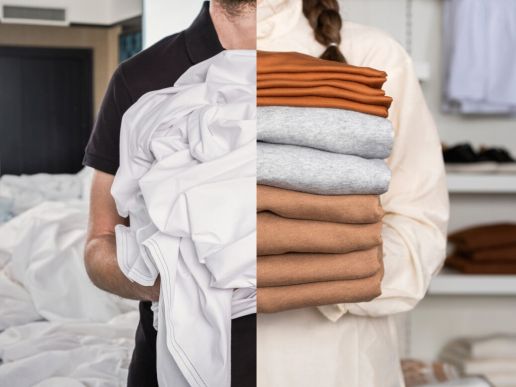
Picture credit: Södra
“Södra also has aggressive sustainability targets. We are, therefore, seeking companies with high sustainability ambitions that would like to partner with us in the delivery of textiles. That will determine our start-up and future production capacity” says Helena Claesson, Project Manager Södra.
Explaining the process further, Johannes Bogren, President of Södra Cell Bio-products, shared: “We are now redrawing the fashion and textile industry map by offering circular flows of textile fibres. A sweater can now become a sweater again. This will create added value for our customers, especially the fashion industry.”
The Fashion for Good Full Circle Textiles Project turned to innovative recycling technologies to close the loop on textile waste. The project’s objective was to explore the potential to reduce the environmental impact of textile waste; the textile-to-textile recycling solution has the potential to eliminate the industry’s dependence on virgin raw materials.
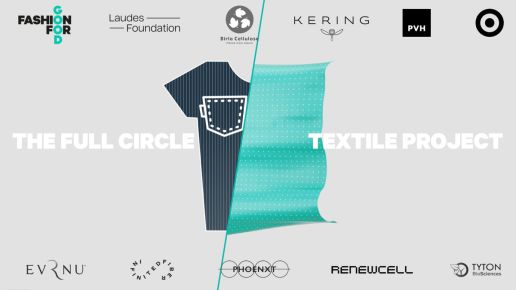
Picture credit: Fashion for Good
Supported by C&A, Martha Willis, Senior Manager of Sustainable Materials and Circular Innovation at C&A says: “This project will help us all in understanding the barriers, impacts and opportunities in the chemical recycling of polyester and is an important foundation to C&A’s commitment to connecting principles of circularity to 7 out of 10 of our products by 2028.”
Focusing on investigating economically viable and scalable solutions, the Full Circle Textiles Project has accomplished their objective scale of disruptive innovation in the industry and the capability of chemical recycling to accelerate circularity.
“The next phase of the project focuses on scaling these solutions and encourages brands, innovators, and supply chain partners to create long-term partnerships, catalyse funding to enable scaling, and leverage industry expertise to develop and implement these technologies further,” says Fashion For Good.
The C&A supported project, which was launched in September 2020, was successfully executed. Read the outcomes and learnings of the project here.
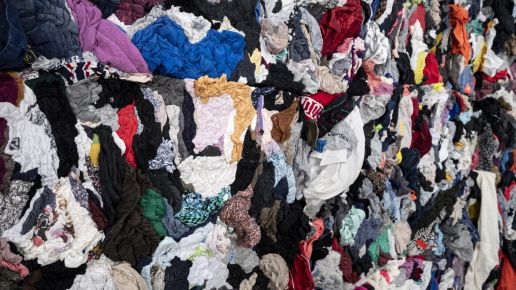
Picture credit: Nord News
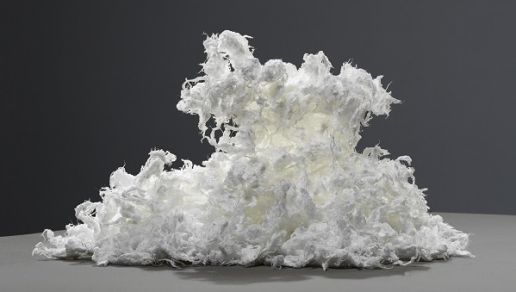
Picture credit: Eco Rebels
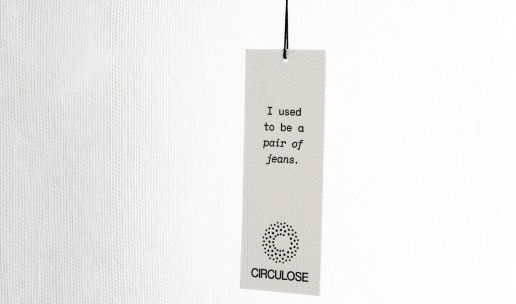
Picture credit: Nouryon
Conclusion
So is recycling textile waste a viable solution or short term plan?
I think that the aim should be to develop the infrastructure necessary to scale textile recycling, and to do this, fashion businesses need to take advantage of upcoming technological developments. By working together toward a common goal, we will get one step closer to a more sustainable textile recycling process, with the end goal of contributing to facilitating a circular economy.

About the author
Founding editor-in-chief of FashNerd.com, Muchaneta has worked in the fashion industry for over 14 years. She is currently one of the leading influencers speaking and writing about the merger of fashion with technology and wearable technology.
Muchaneta Kapfunde | editor@fashnerd.com
———————————————————————–
Discover further industry-disrupting innovations at our upcoming shows:


